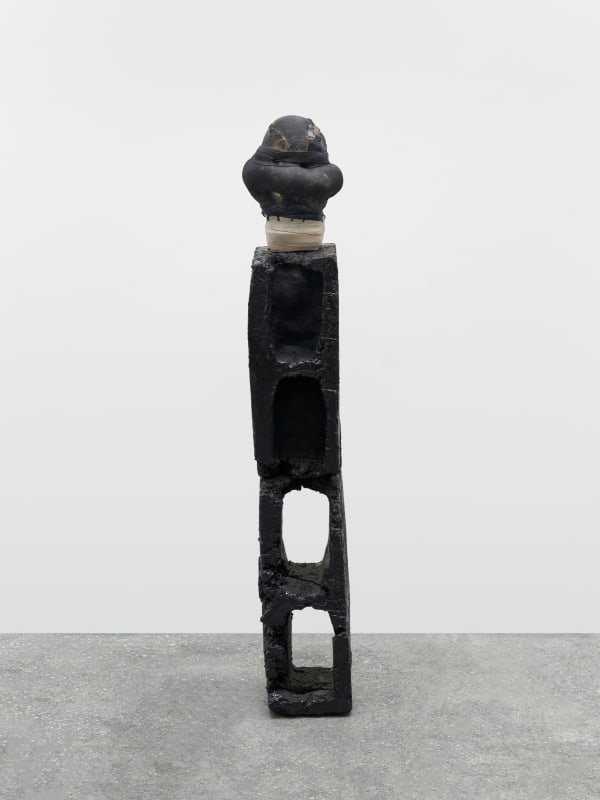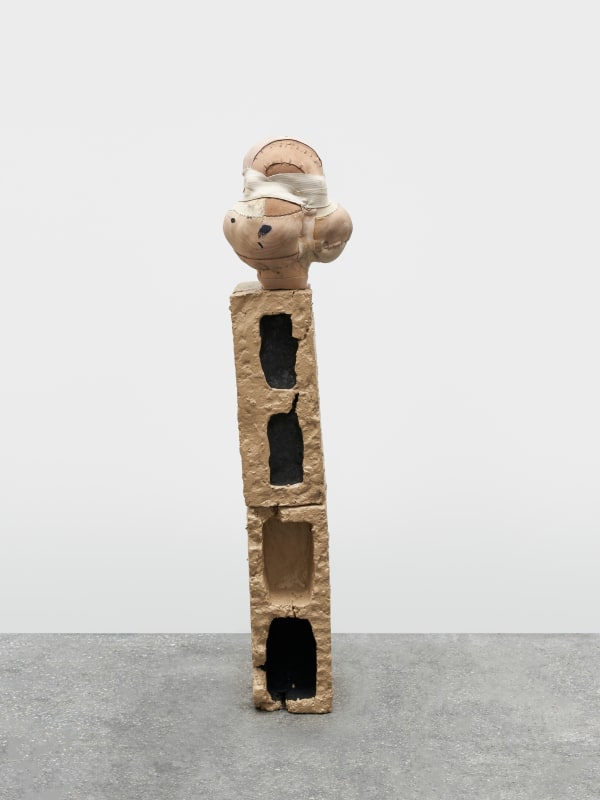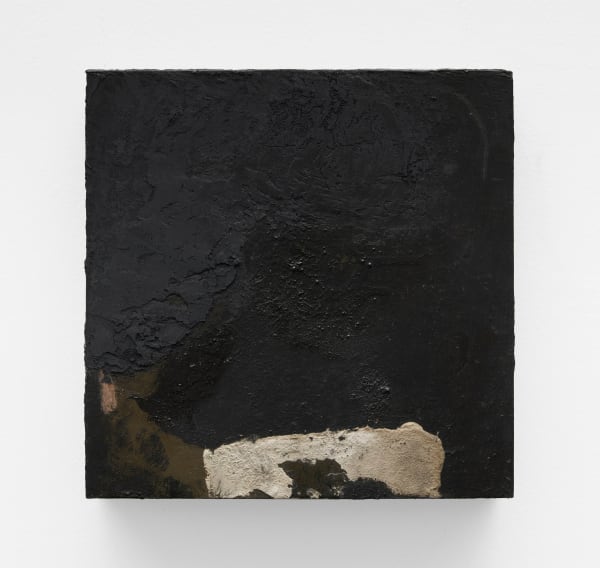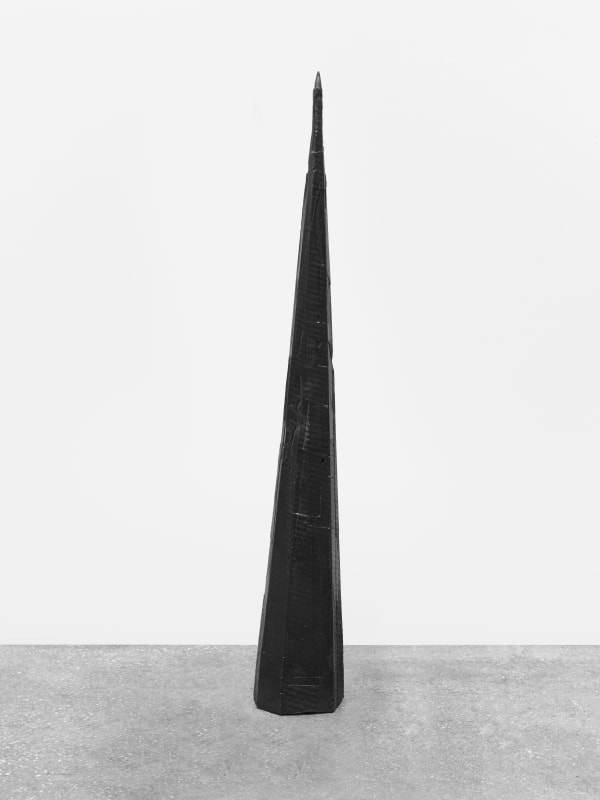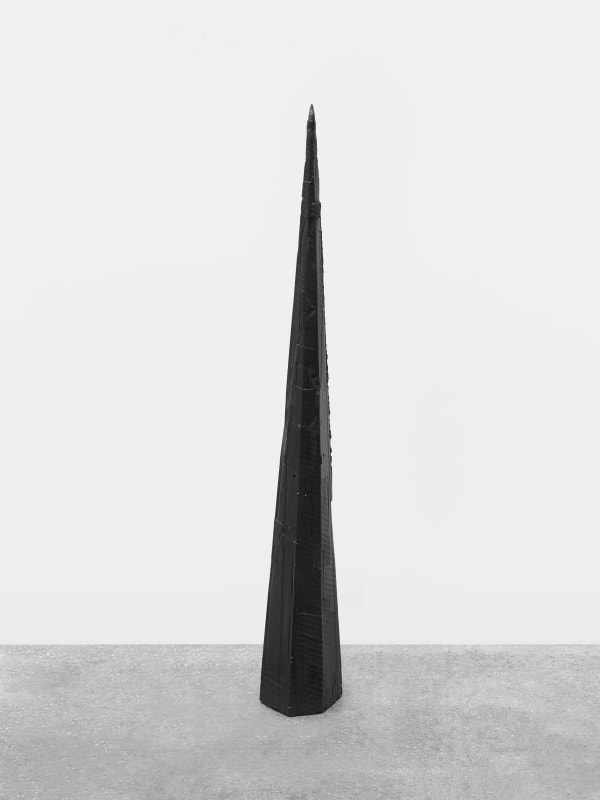though poppies grow Patricia Ayres
A Mendes Wood DM tem o prazer de apresentar though poppies grow [ainda que floresçam as papoulas], primeira exposição individual de Patricia Ayres na Bélgica. O trabalho de Ayres explora como sistemas de repressão social – como a Igreja e o aparato penal – se inscrevem no corpo. Formada em moda, ela usa tecidos elásticos para criar formas corpóreas que evocam ferida, contenção e controle.
O título da exposição vem de um poema de guerra de 1915 chamado In Flanders Fields, escrito pelo tenente-coronel John McCrae. Dentro de uma ambulância, McCrae notou como papoulas brotavam ao redor dos túmulos dos soldados, como se suas pétalas coloridas extraíssem cor do solo ensanguentado. Essas flores brotam em terrenos marcados pela guerra, onde a luz do sol se infiltra pelas rachaduras. À medida que a guerra se arrastava, os campos de batalha assumiam um vermelho vibrante e profundo.
Como pode a beleza emergir de tamanha crueldade? As esculturas de Ayres parecem feridas – até mesmo torturadas. Ainda assim, permanecem de pé – vulneráveis e desafiadoras ao mesmo tempo – como as flores do poema de McCrae. Delicadamente equilibradas sobre bases estreitas, erguem-se contra a gravidade e a força silenciosa da contenção. Para mantê-las de pé, a artista utiliza elásticos dos mais resistentes, produzidos para fins militares e médicos. Fivelas de paraquedas suportam a tensão. E essa tensão física confere peso emocional às obras.
Ayres traz para suas esculturas as habilidades e os materiais do campo da moda. Os elásticos – geralmente ocultos nas roupas – tornam-se agora a própria carne de suas figuras. Comprados em grandes rolos, são tingidos à mão, enrolados e costurados para formar volumes corporais. Quase dá para sentir o que seria habitar aquela pele. Várias formas macias, suspensas em ganchos de açougue, pairam no ar como carcaças – inquietantes em sua imobilidade. Outro grupo de obras apresenta formas elásticas, mais ou menos do tamanho de uma cabeça humana, apoiadas sobre totens que lembram tijolos ocos, mas que são moldados em gesso e celulose, e cobertos com a mesma tinta látex, em tons de deserto, usada no interior de instituições correcionais dos Estados Unidos.
A combinação desses blocos pesados com as formas desgastadas que repousam sobre eles sugere a ameaça da violência; ainda assim, as esculturas preservam a dignidade e a solenidade de figuras estatuárias. Revelam o domínio da artista sobre seus materiais: trabalhando com uma paleta contida – de preto, branco e tons de pele –, ela confere a cada escultura um caráter próprio. Elas recebem nomes de santos traduzidos em números, numa referência à autoridade religiosa e ao apagamento da identidade individual no sistema prisional.
Ayres frequentemente tinge suas esculturas com óleo de unção ou vinho sacramental, conferindo às obras uma dimensão ritual e uma carga de memória pessoal. Na infância, a artista frequentava a igreja com a avó – uma ex-freira que deixou o convento por amor. Apaixonar-se já é, por si só, um ato de coragem; romper com normas religiosas e sociais aumenta ainda mais o risco. O desejo torna-se uma força de transgressão e, muitas vezes, uma fonte de vergonha.
“A vergonha aparece diante do olhar do outro, mas também no confronto com nós mesmos”, escreve Anne Carson, que nos lembra que, segundo um antigo provérbio grego, a vergonha vive nas pálpebras. Uma série inédita de esculturas em concreto e bronze reflete sobre essa ligação íntima entre vergonha e visibilidade. Com formas semelhantes a pináculos e dispostas de modo a prender ou repelir o espectador, elas suscitam múltiplas leituras. Podem lembrar torres de igrejas, elevando-se sobre a paisagem, apontando para o céu – e nos lembrando de que também somos observados do alto. Ou talvez evoquem os capirotes – chapéus cônicos usados por penitentes cristãos para desviar a atenção de si mesmos e direcioná-la a Deus. Originalmente feitos de papelão, esses chapéus tornaram-se instrumentos de humilhação pública durante a Inquisição espanhola, quando eram impostos aos acusados. Essa prática pode ter dado origem ao chapéu de burro, usado para punir crianças nas escolas por mau comportamento. No século XX, sua silhueta ganharia novo sentido ao ser adotada pela Ku Klux Klan como símbolo da supremacia branca. Evocando histórias sobrepostas, as obras de Ayres refletem sobre esses legados de violência.
Para criar essas esculturas, a artista molda concreto em formas de papelão unidas com fita adesiva. Esses começos frágeis permanecem visíveis na superfície endurecida. Palmeiras queimadas – ou cinzas de igreja – foram misturadas a um selador aplicado com pincel, criando um acabamento semelhante ao piche. Uma décima segunda torre foi fundida em bronze. Pontas afiadas emergem do topo, sinalizando perigo e reforçando a sensação de um ambiente hostil e opressivo.
Para o trabalho final de though poppies grow, Ayres fundiu em bronze e cera de abelha bolas feitas de bandagens elásticas. A cera foi obtida no estado de Washington, nos Estados Unidos, onde detentos participam de programas de reintegração, sendo treinados como apicultores. Cuidadosamente dispostas sobre pedaços de bancos de igreja espalhados pelo chão, essas esculturas em forma de vela são acesas uma a uma ao longo da exposição. À medida que a cera vermelha-escura escorre, parece refletir como a violência continua a se espalhar pela sociedade. A chama se torna um símbolo silencioso de esperança e perda – como as papoulas nos campos de Flandres.
– Tim Roerig
-
 Patricia Ayres, 18-9-3-20-18-21-4-9-19, 2025
Patricia Ayres, 18-9-3-20-18-21-4-9-19, 2025 -
 Patricia Ayres, 15-4-1, 2025
Patricia Ayres, 15-4-1, 2025 -
 Patricia Ayres, 10-15-14-1-20-21-19, 2025
Patricia Ayres, 10-15-14-1-20-21-19, 2025 -
 Patricia Ayres, 7-8-9-19-12-1-9-14, 2025
Patricia Ayres, 7-8-9-19-12-1-9-14, 2025 -
 Patricia Ayres, 4-18-15-7-15, 2025
Patricia Ayres, 4-18-15-7-15, 2025 -
 Patricia Ayres, 18-5-9-14-5-12-4-9-19, 2025
Patricia Ayres, 18-5-9-14-5-12-4-9-19, 2025 -
 Patricia Ayres, 23-9-22-9-14-1, 2025
Patricia Ayres, 23-9-22-9-14-1, 2025 -
 Patricia Ayres, 9-4-5-19-2-1-12-4, 2025
Patricia Ayres, 9-4-5-19-2-1-12-4, 2025 -
 Patricia Ayres, Material Study No.02, 2025
Patricia Ayres, Material Study No.02, 2025 -
 Patricia Ayres, 20-18-21-4-15, 2025
Patricia Ayres, 20-18-21-4-15, 2025 -
 Patricia Ayres, Material Study No. 04, 2025
Patricia Ayres, Material Study No. 04, 2025 -
 Patricia Ayres, Material Study No. 01, 2025
Patricia Ayres, Material Study No. 01, 2025 -
 Patricia Ayres, 4-5-14-9-19, 2025
Patricia Ayres, 4-5-14-9-19, 2025 -
 Patricia Ayres, Material Study No. 03, 2025
Patricia Ayres, Material Study No. 03, 2025 -
 Patricia Ayres, 12-1-14-4-5-12-9-14, 2025
Patricia Ayres, 12-1-14-4-5-12-9-14, 2025 -
 Patricia Ayres, 8-9-13-5-12-9-14, 2025
Patricia Ayres, 8-9-13-5-12-9-14, 2025 -
 Patricia Ayres, 4-25-13-16-8-14-1, 2025
Patricia Ayres, 4-25-13-16-8-14-1, 2025 -
 Patricia Ayres, 1-12-5-14-1, 2025
Patricia Ayres, 1-12-5-14-1, 2025 -
 Patricia Ayres, 62.6°, 2025
Patricia Ayres, 62.6°, 2025 -
 Patricia Ayres, 87.8°, 2025
Patricia Ayres, 87.8°, 2025 -
 Patricia Ayres, 79.5°, 2025
Patricia Ayres, 79.5°, 2025 -
 Patricia Ayres, 86.2°, 2025
Patricia Ayres, 86.2°, 2025 -
 Patricia Ayres, 84.9°, 2025
Patricia Ayres, 84.9°, 2025 -
 Patricia Ayres, 70.1°, 2025
Patricia Ayres, 70.1°, 2025 -
 Patricia Ayres, 69.5°, 2025
Patricia Ayres, 69.5°, 2025 -
 Patricia Ayres, 89.6°, 2025
Patricia Ayres, 89.6°, 2025 -
 Patricia Ayres, 80.0°, 2025
Patricia Ayres, 80.0°, 2025 -
 Patricia Ayres, 76.2°, 2025
Patricia Ayres, 76.2°, 2025 -
 Patricia Ayres, 82.1°, 2025
Patricia Ayres, 82.1°, 2025 -
 Patricia Ayres, 86.7°, 2025
Patricia Ayres, 86.7°, 2025 -
 Patricia Ayres, 1-3-1-18-9-21-19, 2025
Patricia Ayres, 1-3-1-18-9-21-19, 2025 -
 Patricia Ayres, 2-12-1-9-19-5, 2025
Patricia Ayres, 2-12-1-9-19-5, 2025 -
 Patricia Ayres, 12-21-4-7-1-18-4-9-19, 2025
Patricia Ayres, 12-21-4-7-1-18-4-9-19, 2025


